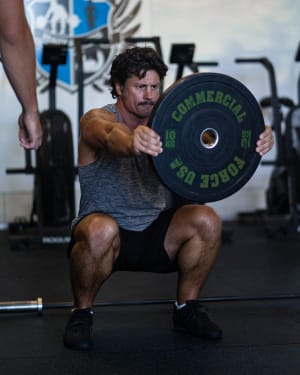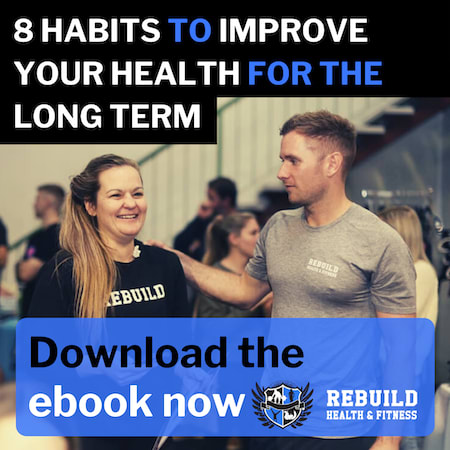
Starting the journey towards better health is something we tend to put off until tomorrow – a day that never arrives.
And just like everything else, “starting” is probably the hardest step to take. But there are ways to make things easier for you to embark on your health or fitness journey.
Getting a coach
Many people choose to start their journey alone, without any assistance.
While that is understandable, some people could be nervous about working with a coach or a nutritionist, or maybe they can’t afford it.
But relying on Dr Google to help can be detrimental.
Sean says, “asking Dr. Google ‘how to lose weight,’ or ‘how to lose fat,’ we always stumble across the weirdest possible methods, and we tend to lean towards something that we think would give us the quickest, easiest results. And that often leads to the circle of perpetual diet.”
James cites the pyramid of importance for fat loss - “good coaches are really important for the bottom of the pyramid. For the lifestyle, and behaviour, and habit change that is going to keep you successful long-term.”
Coaches act as a guide, especially at the beginning of the whole journey. They can help set up everything that might be important and effective in the long run.
Build your foundation
The foundation is simply working on the most basic things such as lifestyle and behaviours and habits. And that is exactly what coaches and nutritionists can help out with.
“If you’ve tried to diet multiple times before, it may not be a good time to diet," says James. "You should always, through this next stage, be trying to improve your lifestyle, your habits, your behaviours, so, you can stick to it longer.”
Tracking – the beginning of dieting
The first thing to do is to take some measurements, weigh yourself, and take some photos of yourself.
James says that there is no need to measure every single bit of your body. He suggests four main measurements, “one of them is your waist – the thinnest part of your stomach. The other is your belly button because that doesn’t move. The other one is your nipple line for your chest. And [lastly] the biggest part of your bum – your hips.”
Sean adds, “don’t squeeze too hard, just pull [the measuring tape] around firmly. Keep it there for a few seconds where you take a few breaths.”
If you choose to weigh yourself, you should weigh yourself every day. Maybe in the morning, after using the washroom, or at night before bed, so that it’s exactly the same routine every day. At this time, you should also be tracking your food.
The ideal thing to do is to track your daily calorie intake and ensure that you’re weighing yourself every day. After a week or two weeks, you will start noticing your food averages and energy balances.
James states: “Say if I’m eating an average of 2000 calories every day and am maintaining my weight, that shows to me that 2000 calories are probably around my ‘maintenance’. If I am eating 2000 calories per day and am gaining some weight, I am probably in the ‘surplus.’ And obviously, if I’m losing some weight, I’m in the ‘deficit.’”
And that means that if you notice that you’re in the maintenance category, you would take off some calories from your everyday intake and move towards a deficit, which would put you on the right track. And then you repeat the process.
Calculating ideal calorie intake
One of the ways to calculate how much you should be eating per day is the Harris-Benedict equation. It’s quite easy. You can just look it up on google, put all their information in, and it will calculate and give them their Basal Metabolic Rate (BMR), commonly known as metabolism.
Another way to go about finding the BMR is the Mac method by Martin Macdonald. For females, it is the bodyweight multiplied by 22, and for males, it is bodyweight times 24.
Once you have this value, you just multiply it by your physical activity level. If you are sedentary, your physical activity level is about 1.1 to 1.3. In lightly active jobs, such as coaching, the level is about 1.4 to 1.5. And for tradies and heavily physical workers, it’s 1.6.
Therefore, you find your BMR, multiplied by your physical activity level, and that will give you an estimation of your total daily energy expenditure.
James says, “in a perfect world, I’d have everyone spend a month finding their true maintenance. Because then it makes dieting a lot easier.”
It is also extremely important to have at least some level of physical activity. This also becomes easier once you find something you enjoy doing. Keeping a track of daily steps can also be useful. About 7,000 steps per day should be a minimum from a health perspective.
Protein intake
“For those who are looking to lose weight, we want to make sure that we are able to maintain as much lean muscle mass as we can. We don’t want you to get to this skinny, weak little creature,” says Sean.
Australia in general has pretty low protein. It is important to have a high protein diet for not just muscle mass, but also for ensuring that you feel happier, feel full for longer, have better immunity, and for other general health. This even includes things such as your skin and hair.
“[Protein] is the key macronutrient for health,” emphasises James.
The minimum protein amount to be on for a base level of health is 1.2 grams per kilo of bodyweight. James recommends that people try for about 1.5 to 1.6 grams per kilo of bodyweight. Ideally, you should be looking to go more, if you're looking to maintain muscle mass while dieting, try to aim for 1.8g.
But of course, it will depend on the total number of calories you’re eating too. The higher the calorie count, the easier it is to eat more protein.
Fats and carbohydrates
Roughly 25% of your diet should be made up of fat. Fat is important to help balance hormones, vitamins, and minerals in your body. The majority of people will get 25% without thinking too much about it. The carbs can fill in the rest.
Fats and carbs can variate in quantity in the total diet; however, it is extremely important to have protein as a constant.
As James puts it: “Calories are king, and protein is next in line to the throne. And then there’s fats and carbs.”
If you need assistance on your health journey, contact us to learn how we can help with a free consultation.

